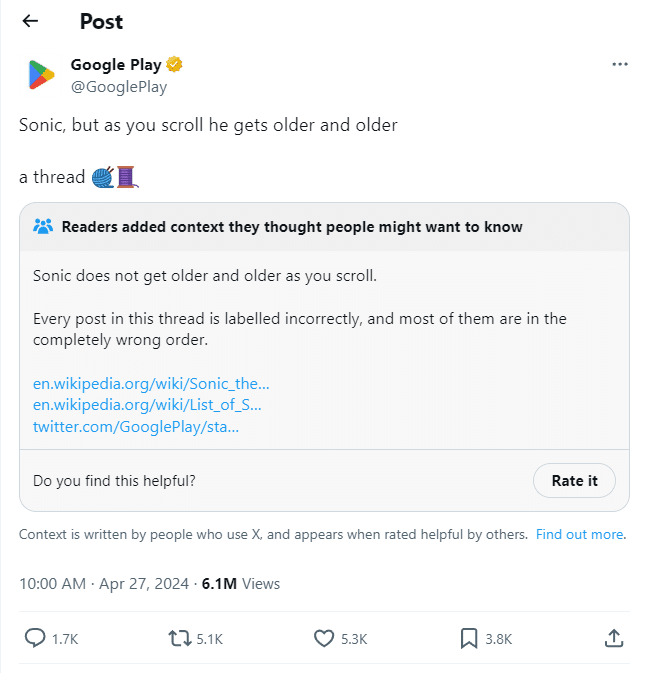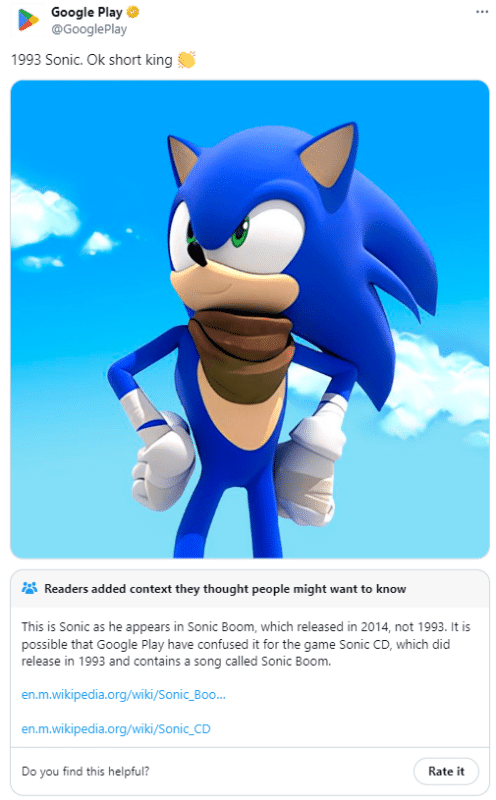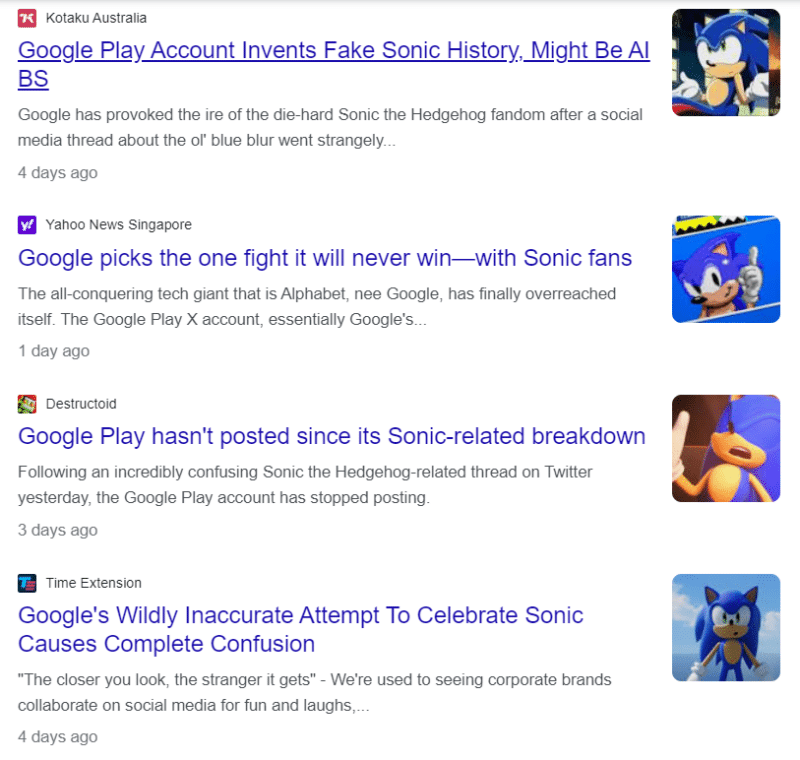The rise of social media has made it quick and easy to spread misinformation. Anyone can write a post with false or misleading information and share it rapidly across various platforms. However, as technology like artificial intelligence and deep fakes evolve and become more accessible, generating more convincing and deliberately deceiving misinformation becomes much easier. For example, Google’s AI Search feature recently told users to eat rocks and add glue to pizza. As misinformation becomes more prevalent, organizations must have strict policies to address such instances. Below, we’ll analyze a recent Google Play X (formerly Twitter) thread and discuss why human intervention could have avoided a social media issue.
Google Play’s Alternate History of Sonic the Hedgehog

I love Sonic the Hedgehog. I grew up engrossed in the blue blur’s adrenaline-fueled world. So much like the rest of the internet, I was confused when Google Play’s X account released a thread about Sonic’s history, where every single post was filled with misinformation. The X thread was so misleading that community notes had to be added to the original post in the thread to clarify that the entire thread was wrong.


1991 Sonic. The cover? Rotund. Husky. Still fast as lightning. The actual game? 8-bit GLORY 🙌 pic.twitter.com/a2k2j9mvXH
— Google Play (@GooglePlay) April 27, 2024
The first post in this thread shows Sonic in what is supposedly his oldest game. However, the thread’s purpose was to start with the most modern version of Sonic, and he was supposed to get older as you scroll down. The post also uses some interesting language. I wouldn’t describe Sonic as “rotund or husky,” as some audiences could consider these terms offensive.
Here, we are also met with the first of the misinformation. To get technical, the original Sonic game wasn’t 8-bit but a 16-bit game. 8-bit graphics could only showcase 256 colours, while 16-bit games can access a much broader 65,536 colours. Furthermore, the image used in the post also shows Sonic’s sidekick, Tails, who didn’t debut until Sonic the Hedgehog 2 (1992.) My public relations professor instilled into us that if you want to remain credible in the eyes of your audience, you need to ensure that you’re releasing good, verified and validated information. These errors could have been avoided with basic fact-checking, underscoring the importance of review processes in content creation.
1993 Sonic

The following post in the Thread claims to show a picture of Sonic from 1993. However, it’s actually a picture from Sonic Boom, released in 2014. Furthermore, the phrase “ok, short king” also seems quite odd. This is typically a slang term Gen-Z uses to describe a man shorter than the average. It seemed out of place to describe a cartoon character.
The X thread continues like this, making many mistakes that could have been caught in a few seconds of fact-checking. This thread quickly became the internet’s punching bag, as even the official Sonic the Hedgehog X account had to comment on it.
what are you doing
— Sonic the Hedgehog (@sonic_hedgehog) April 28, 2024
Key Takeaways
While this hasn’t become a full-blown crisis for Google, it has become an issue. It took Google weeks to delete the Twitter thread and issue a statement. A Google spokesperson apologized for the errors and claimed AI wasn’t used and these were simply human errors. The Google team’s silence about the thread hurt the company’s credibility and caused widespread confusion.

But what can we learn from this?
For starters, this incident underscores the importance of using verified information to build credibility with the public. Minor background checks could have prevented this issue, raising questions about the team’s content review processes.
Additionally, having a plan in place to address issues like this is essential for maintaining credibility and avoiding potential damage to a brand’s reputation. The Sonic social media team responded very quickly, distancing themselves from the misinformation, but it took the Google team weeks to address the issue.
It is imperative to combat misinformation by releasing verified information quickly to keep your organization credible in the eyes of your audiences.
While this thread was relatively harmless, it could have been very damaging if it had been about a serious topic. This example highlights that trying to make a light-hearted social media post can damage your brand if you don’t have a proper strategy to execute it.
If your business could benefit from an issues management plan to avoid situations like this, or if you need help with your social media strategy, contact Focus Communications today and see how we can help!





